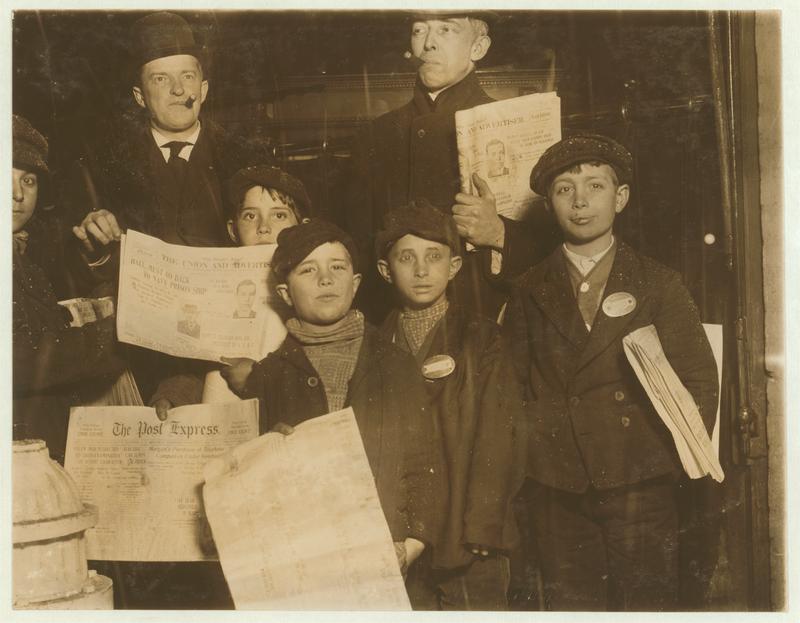 The NYPR Archive Collections
The NYPR Archive Collections
Episode 17 Italians in the United States

From the Department of the Interior, Office of Education study guide:
THE ITALIANS Their contributions include contributions to the art of living—to the spice and gaiety of life.—WILLIAM SEABROOK.
Though the Irish, the Welsh, and other peoples claim to have made voyages to the New World in the sixth century, yet it is Christopher Columbus, the Italian navigator, to whom we give credit for its discovery. It was another Italian, Amerigo Vespucci, for whom America was named. Early Explorers. The mainland of North America was discovered by the Italian John Cabot and his son Sebastian in 1492. Giovanni Verazzano sailed up the Hudson River in 1524. Later, Enrico Tonti was the right-hand man of LaSalle, the French explorer of the Mississippi Valley. Italian priests went with Coronado on his expedition to Nebraska in 1540. Many of them stayed to do mission work among the Indians of the Southwest. One of these, Fra Marco de Nizzo is said to have been the first white man to explore Arizona. Wine Growers, Glass makers, Silk Workers. Winegrowers from Italy came to Virginia in 1610 and glass makers from Venice arrived in 1621.
Italians also joined the Swedes along the Delaware River. By 1700, groups had settled on Staten Island, in Virginia, and in Maryland. When Oglethorpe settled Georgia in 1733, he brought in Italian silk workers' to develop the silk industry. Though successful at first, the industry did not survive. Musicians and Exiles. During the American Revolution, there were a few Italian soldiers, including Filippo Mazzei, a friend of Thomas Jefferson. At Jefferson's invitation, musicians also arrived from Italy. Afterwards, these became members of the first United States Marine Band. Up until 1850, less than four thousand Italians had come. These were chiefly musicians and exiles who came after the Revolutions of 1820, 1821, 1830, and 1848. The most famous of these was Guiseppe Garibaldi.
The New Immigrants.
It was during the 1880's that the tide of immigration from Italy really set in. Due to overpopulation, the breakdown of the land system, heavy taxes, and loss of their cotton and sulphur markets, the Italians lent a ready ear to the demands of American industry for more workers. Between 1886 and 1906, more than two million Italians arrived from the agricultural sections of southern Italy. On their arrival in this country, they settled chiefly in New York, Chicago, Boston, Providence, Philadelphia, and large cities of the East. Up to and after the World War, the Italians continued to come in large numbers until the Quota Acts of 1921 and 1924 were passed. What They Did. These workers went into the factories and on to the railroads. They dug our subways and constructed our sewers, elevated railroads, and city streets. It was not the kind of work they had been used to, but they willingly undertook the hardest kind of labor.
Today, they may be found in all walks of life, from barbers, tailors, waiters, and chauffeurs to mayors of some of our large cities. Not all the Italians settled in the cities. Many developed truck gardens in New Jersey and New England. Others worked in the vineyards and fruit orchards of California. Still others, in the rice and sugar fields of Louisiana. Their communities at Sunnyside and Tontitown, Arkansas, are nation famous. Italian Gifts. The Italians have contributed much to American life, especially to music, art, and sculpture. They have given us orchestras, opera singers, and orchestra leaders. Italians have been connected with the Metropolitan Opera House of New York City since it was founded in 1883. A group of artists and sculptors have done some outstanding work in our National Capitol and in other public buildings. The Italians are an artistic and sensitive people who have high ideals.
WNYC archives id: 125525